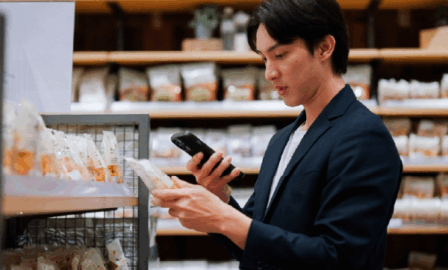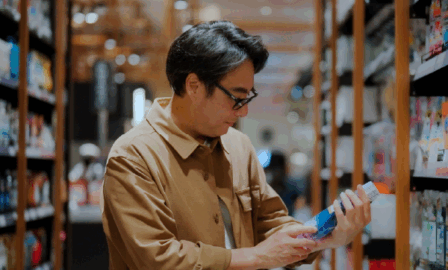Creating a Successful Digital-First Experience
The modern digital environment has blurred the lines between retail, e-tail, and manufacturers. Consumer product goods are buying direct-to-consumer (DTC), or D2C, companies – such as Unilever’s acquisition of Dollar Shave Club – and traditional retailers like J. Crew are continuing to explore options through wholesale. DTC companies implementing a digital-first strategy have had lots of success, and many pre-digital consumer product manufacturers are adjusting their models to emulate the digital-first experience.
Large CPG companies have traditionally sold their products through brick and mortar retail stores, but the modern internet marketplace has caused a shift for more CPG companies to use a digital DTC strategy. While traditional CPG companies want to market more through online channels, oftentimes they aren’t as nimble as DTC startups that are designed to be flexible to consumer needs. CPG companies that have successfully entered the DTC space have used digital platforms to add value and convenience to the consumer, utilized social media to facilitate conversations between consumers, and aggressively grown DTC digital channels. First, we will examine DTC startup brands that provide great lessons for CPG companies to follow, and then we will discuss how CPG companies have used these lessons to grow their digital DTC presence.
Read More: Taking FMCG D2C Here
Reformation is an eco-friendly women’s clothing company that has generated $100 million in sales and developed a reputation as the “cool girl’s” brand. Walking through its stores is a technological experience similar to an Apple Store. There are touchscreens and monitors everywhere, and these screens are used to browse different clothes and sizes and add them to a shopping cart so that they can be tried on in a dressing room. This technology allows the store to remove much of the clothing on display so that the store is much less clustered and people are free to roam. The dressing rooms have also integrated innovative technology, such as customizable lighting, speakers, and phone chargers. Similar to the store, the dressing rooms have tablets where the consumers can request different sizes and styles, removing the hassle of having to walk back and forth. This technology is designed so that the consumer can have the most convenient shopping experience possible.
In the mattress industry, Casper has totally changed the way people buy beds. Casper mattresses are bought online and delivered straight to the customer’s door, eliminating the hassle of having to transport the mattress from the store to the house. Casper distinguishes itself from the competition by using technology and branching out to multiple digital channels to become a content publishing lifestyle company rather than a mattress company. Casper currently operates Pillow Talk, the official blog for Casper, and Woolly, a humorous digital publication about comfort, wellness, and modern life. Woolly is related to all things sleep, including lighthearted articles such as “The Insomniacs’ Guide to Midnight Snacks” and “TV Shows Are My Melatonin.” By combining these digital contents with its witty social media, Casper has created a conversational, relaxing, and creative environment about its brand.
Read More: Is DTC Right for my Brand?
Nestle has embraced a digital mindset to sell convenience and add value to its consumers. With increased competition in stores, Nestle found that consumers will pay slightly more for the convenience of home delivery, and it launched a home-delivery service called ReadyRefresh that delivers its beverages directly to the consumers. Because it has built large customer bases from years of delivering five-gallon jugs, it leveraged this large customer base to earn entry into the home. CPG companies typically have a large customer base, so leveraging this base is extremely helpful for CPG companies entering the DTC realm. Nestle also partnered with Amazon Alexa to create GoodNes Skill. By using voice commands, users can learn more about recipes and helpful cooking tips, and GoodNes Skill even provides a visual guide for recipes. These digital platforms have expanded its eCommerce sales from 2.9% in 2012 to 6.2% in 2017.
Kimberly-Clark has utilized social media as a core digital marketing strategy to facilitate conversation between consumers. It created a “someone needs one” campaign, to show how Kleenex can be used to help improve someone’s day, publishing inspirational videos, such as appreciation for a chorus teacher, a beloved nurse, and a school custodian. These poignant videos create positive conversations about Kimberly-Clark products that build online communities of loyal brand customers.
L’Oréal has aggressively grown its digital DTC channels, having more than 30 brand eCommerce sites. This expansion has been supported by PFSweb, a global commerce service provider that develops and manages eCommerce solutions for L’Oréal’s brands. L’Oréal’s collaboration with PFSweb has provided a solid foundation in supporting its strategic and operational initiatives. The vast number of brands allows L’Oreal to customize a unique digital strategy for each brand, helping it create €2.1 billion in eCommerce revenue in 2017 and a 33.6% growth in eCommerce.
Through technology, DTC companies have focused on connecting with customers on an emotional level to produce an unforgettable buying experience. For the CPG company looking to expand its DTC presence, using a digital-first strategy and following the above lessons can be the necessary step to unlock its potential.
Learn More About Our DTC Consulting Team
Co-Author and contributions by Thomas Wang.



